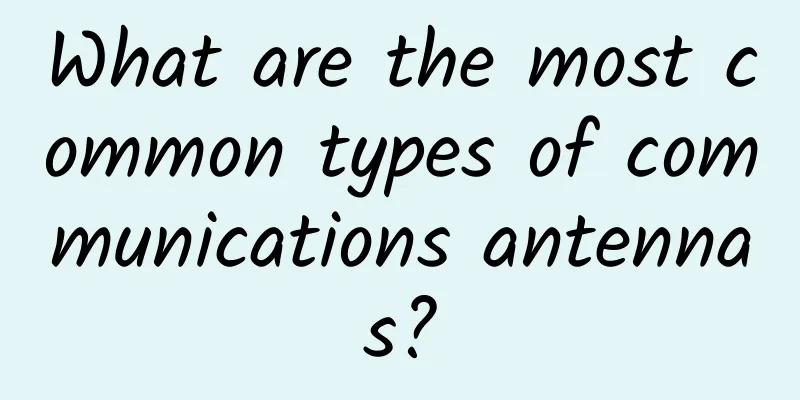What role can fiber optic technology play in education?

|
In the ever-evolving field of education, technology has become a catalyst for change. Among the various technological advancements that have left a deep mark on the education sector, fiber optics stands out as a game changer. In this article, we will embark on a journey to explore the profound impact of fiber optics on schools and the education sector as a whole. The significance of fiber optic technology in educationFiber optic technology is a transformative force in education, impacting every aspect of the learning ecosystem. Its contributions include equitable access, cost efficiency, global connectivity, and the ability to adapt to emerging educational trends. By adopting fiber optic technology, schools can position themselves at the forefront of 21st century education, ensuring that students are fully prepared to excel in an increasingly digital and connected world. Here are a few key aspects that highlight the importance of fiber optic technology in education: Enhanced online learning: With fiber, schools can support online courses and e-learning platforms, making education available even when in-person attendance is not possible. Seamless collaboration: Fiber optics enables real-time collaboration between students, teachers, and parents through video conferencing, email, and educational applications, creating a more interactive learning environment. Research and Information Access: Fiber optic technology enables students to quickly access a vast amount of information on the Internet. This enables them to conduct research, access digital libraries, and explore educational databases, thereby developing independent learning and critical thinking skills. Reliable Connection: Fiber optics provide a consistent, reliable internet connection, reducing downtime and interruptions in your learning process. Support for multimedia content: Schools can play high-quality videos, conduct virtual field trips, and use rich multimedia educational materials to increase student engagement and comprehension. Future-proof education: By investing in fiber optic infrastructure, schools can ensure they are prepared for future technological advances and adapt to the changing demands of modern education to remain competitive in a digital world. Fiber optics and school infrastructureSchools can upgrade their infrastructure to include fiber-optic networks, ensuring that every student and teacher has access to high-speed internet. Future-proof: Fiber optics is ready for future technological advancements, ensuring a long-term investment. Scalability: Schools can easily expand their internet capacity as demand grows. Minimal maintenance: Fiber optic cables require less maintenance than traditional copper cables. The role of fiber optics in educationIn today's fast-paced digital age, the role of technology in education is more important than ever. Fiber optic media converters are a groundbreaking technology that has a profound impact on the education sector. High-speed network speeds: Fiber-optic networks offer unmatched speeds, providing students and educators with the opportunity to quickly access online resources, websites, and multimedia content. This high-speed connection ensures that learning materials load quickly without frustrating delays. Reliability and consistency: Fiber optics are highly resistant to interference and signal degradation. This reliability ensures that access to online courses, video conferencing, and digital learning materials remains uninterrupted, creating a seamless learning environment. Low-latency real-time interaction: Fiber’s low latency facilitates real-time interaction in virtual classrooms. Students can participate in discussions, ask questions, and collaborate with classmates and instructors without noticeable delays. This promotes a more engaging and interactive learning experience. Support for bandwidth-intensive applications: Fiber can handle large amounts of data simultaneously. This capability is critical for activities such as transmitting high-definition video, conducting virtual labs, and accessing cloud-based educational platforms. It ensures that students have uninterrupted access to a wide range of educational resources. Scalability for future growth: Fiber optic networks are highly scalable. Schools and educational institutions can easily expand their internet capacity to meet the growing demand for online learning resources and services, and this scalability future-proofs infrastructure investments. Improved access to online resources: Fiber enables students to access a rich collection of online educational resources, including e-books, multimedia tutorials, educational websites, and digital libraries. This expanded access enhances opportunities for independent learning and research. Enhanced virtual classrooms: High-speed fiber connections facilitate the creation of interactive virtual classrooms. These classrooms can combine high-definition video conferencing, virtual whiteboards, screen sharing, and collaboration tools to make remote learning engaging and effective. Personalized Learning Opportunities: Fiber makes it possible to implement personalized learning strategies. Educators can use adaptive software, real-time assessments, and tailored content delivery to meet the needs of each student, ensuring that every learner receives a customized educational experience. Global connectivity and collaboration: With fiber-optic connections, students and educators can easily collaborate with peers and institutions around the world. This global reach promotes cross-cultural learning experiences and exposes students to different perspectives. Prepare for a technology-driven world: By incorporating fiber into education, institutions prepare students for a technology-driven future. Proficiency in utilizing high-speed internet and digital resources equips students with essential skills for the modern workforce. Fiber optics outperforms traditional methods of Internet connection, especially in terms of speed, reliability, and low latency. While traditional methods such as DSL (digital subscriber line) and cable broadband have their own advantages and continue to effectively serve many users, fiber optics remains a cutting-edge option for educational institutions seeking to provide students and educators with the best online learning experience. Its high speed, symmetrical bandwidth, and scalability make it a key technology for advancing education in the digital age. |
<<: Six big pitfalls encountered when calling third-party interfaces
>>: Application of SRv6 Technology in Home Network
Recommend
The Two Generals Problem and TCP Three-Way Handshake
The Two Generals Problem, also known as the Two G...
Let’s talk seriously about what is a fiber optic terminal box?
When it comes to network cabling, outdoor connect...
Consumer finance practitioners tell the story: Black industry fraud is becoming more high-tech
[[188974]] Chinese consumer finance practitioners...
Talk about Kerberos kinit command and ccache mechanism
1. Introduction Hello everyone, I recently encoun...
Six advantages of single-pair Ethernet technology
As Single Pair Ethernet (SPE) gains more and more...
New infrastructure is just starting, 5G is just beginning, and the key year for smartphones is 2021
"New infrastructure" is one of the core...
7 ways to understand the 5G standards in June
MicrosoftInternetExplorer402DocumentNotSpecified7....
Deepin Technology was invited to attend the 2019 Annual Meeting of Jiangxi Health Information and Health Medical Big Data Society and delivered an important speech
From November 13 to 15, 2019, the 2019 Jiangxi He...
[Black Friday] ZJI: Hong Kong Alibaba Cloud CN2 model 55% off monthly payment starting from 412 yuan
In order to welcome the upcoming Double 12 and ov...
Are the price increases for mobile phones and broadband services caused by 5G construction?
Over the past year, mobile phone charges have inc...
Shifting gears to 5G: Operators will experience both hardship and sweetness in 2019
Recently, the three major operators have released...
What is blockchain and what impact does it have on data centers and cloud computing?
Today, more and more applications are causing the...
The impact of edge computing and 5G on future channel business
Last year, the COVID-19 pandemic has made us even...
Alibaba's Cheng Chao: The ultimate development of the monitoring system is to achieve intelligence
[51CTO.com original article] Seven years of hard ...
2G network withdrawal encounters new resistance, and most of the existing IoT is based on 2G network
Currently, operators are actively migrating 2G us...









